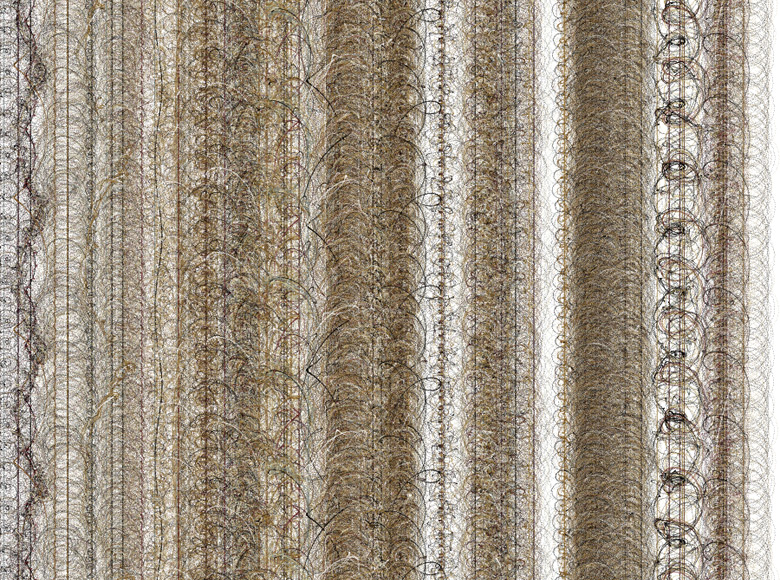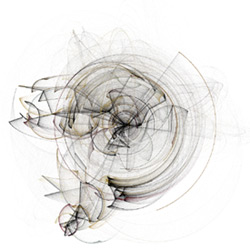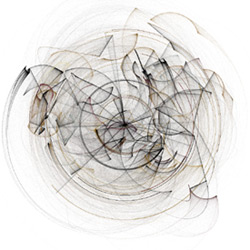 |
| |

variation A
processing august, 2004 j.tarbell |
| |
 |
| |
 |
 |
 |
|
| |
250 x 250 pixels
73 orbitals |
500 x 500 pixels
200 orbitals |
900 x 900 pixels
500 orbitals |
|
 |
|
| |
The Orbitals is a collection of particles operating on one simple rule: choose another particle in the system and orbit it with a fixed radius at a constant velocity. This is variation A (see Orbitals Variation B).
To set the rendering stage, particles are randomly introduced into the system. Particles have a 90% chance of choosing to orbit a particle already in the system, otherwise, they become a root particle. Root particles are given a constant vertical translation in position, so that they are dragged from the top of the screen to the bottom. Dragging the root particle also drags all the particles orbiting it. |
|
| |

early0000 low count orbitals provide clues as to what might unfold with higher numbers... |
| |
The image above contains about 100 orbiting particles including 18 root particles.
Let us increase the number of elements in the orbiting system into the hundreds... |
|
| |
|
| |

0000 cyclic patterns from orbiting systems |
| |
| I am reminded of an American childhood firmly based in the 1970's. |
|
| |
| |
| |

B2000 one root particle with no translation |

B2001 one root particle with no translation |
|
| |
| A variation of the Orbitals (see Orbital Variation B) exists that uses only one root node, and does no dragging. The result is an interesting calendar like object with a deeply nested structure. |
|
| |
| |


